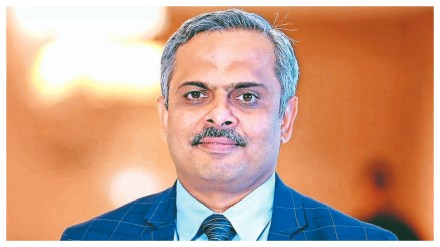Virtual twins are advanced digital replicas of a physical asset, process, or system, that allow users to model, simulate, and optimise operations in a virtual environment before implementing them in the real world. Today, this technology is used in a variety of industries, including manufacturing, healthcare, infrastructure, and urban planning. “We have created a virtual twin of Jaipur city in collaboration with the state government,” says Deepak NG, MD, Dassault Systemes India. The company creates software for 3D design, simulation, and data management. He speaks to Sudhir Chowdhary on the market opportunity and plans for business expansion in India. Excerpts:
What is your outlook for India?
India’s key growth drivers are transportation and mobility, particularly automotive followed by aerospace and defense, and industrial equipment. Among the 11 industries and 60+ segments we support, these remain our strongest contributors in India. Our strategy is built around three macroeconomic spheres – manufacturing, infrastructure, and life sciences & healthcare covering industries such as aerospace, mobility, energy, cities, and pharmaceuticals. We focus on OEMs in sectors like automotive and aerospace, MSMEs in tier 2 and 3 cities, startups, and academia enabling each to collaborate, innovate, and integrate into global value networks.
What value do virtual twins offer?
Virtual twins span the entire value chain from consumer insights and concept design to engineering, simulation, manufacturing, supplier collaboration, and customer experience – all modeled digitally. Powered by our 3DEXPERIENCE platform, data from every stage builds a virtual twin of both product and process. With embedded AI, the system offers predictive insights like recommending optimal configurations for a six-seater vehicle based on historical data. We call this sustainable innovation at every stage.
How do urban planners benefit from it?
Virtual twins empower planners to simulate real-world conditions. In Jaipur, for example, planners used our technology to virtually assess a proposed park’s location. They discovered it was too close to a noisy road and relocated it for better usability. In other projects, traffic patterns are simulated, pollution and energy metrics are evaluated, and infrastructure changes are tested digitally before real-world implementation.
Which companies use the 3DEXPERIENCE platform?
In automotive, Mahindra & Mahindra, Tata Motors, and Ashok Leyland are using our solutions. They begin with modules like supplier collaboration or engineering, and then expand into manufacturing execution and simulation, creating a seamless digital thread across operations. Jindal Stainless uses the platform to optimise manufacturing processes. In energy and materials, Larsen & Toubro applies it to manage complex hydrocarbon projects digitally, from engineering to execution. Aerospace innovator Raphe and EV brand River are leveraging the platform to accelerate product development.
Yet, scaling AI remains a challenge for many firms.
The key lies in data unification across departments. Many companies succeed with pilot AI initiatives in silos. But organisational impact comes from scaling AI across the full value chain. For example, if a product fails a drop test in simulation, the platform not only captures the failure but checks whether the material used meets sustainability regulations. It may recommend compliant alternatives, revalidate the assembly, and update procurement all from a single ecosystem. This is only possible with full value chain and value network integration.
